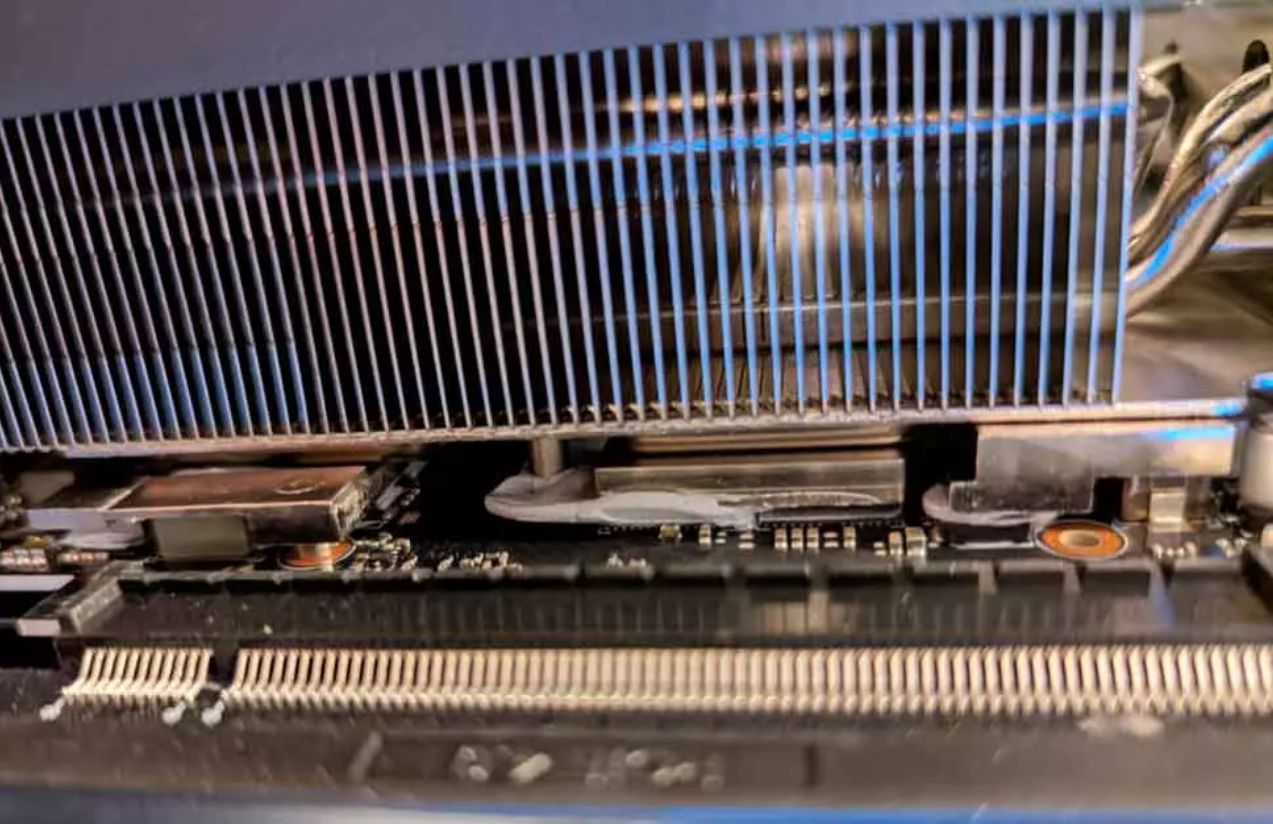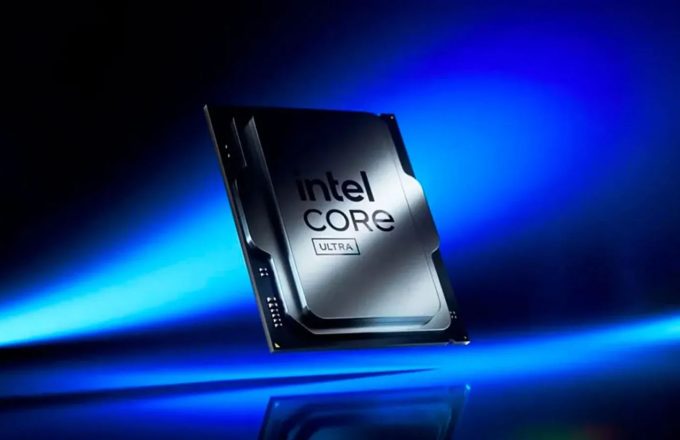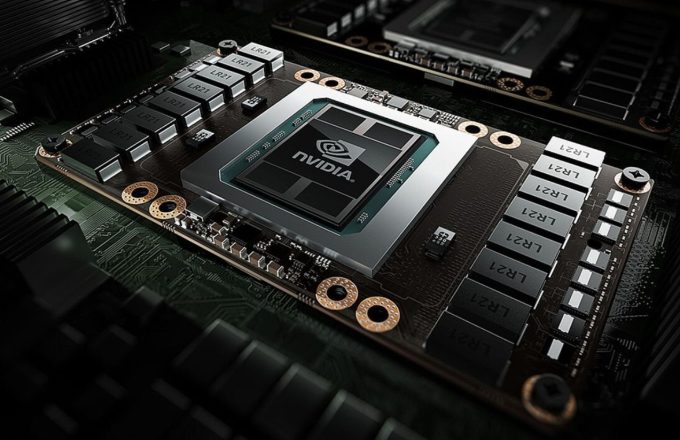NVIDIA’s new RTX 50 graphics card series has had a troubled launch. In addition to the usual issues with stock shortages and prices far exceeding the manufacturer’s suggested retail price (MSRP), the cards have faced technical problems such as black screens, burnt connectors, and missing ROPs (Raster Operations Pipelines)—all directly linked to NVIDIA. On top of that, new complications have begun to surface in models assembled by third-party manufacturers.
One of the most recent cases involves the AORUS GeForce RTX 5080 Master Ice, produced by Gigabyte. The company issued an official statement after a unit mounted vertically showed signs of thermal gel leakage. According to Gigabyte, the issue was an isolated incident affecting the initial production batch.
The manufacturer explained that the early units received an extra amount of thermal gel to ensure sufficient thermal coverage. While this surplus doesn’t impact the card’s performance or lifespan, it may affect the aesthetics over time if the gel begins to seep out. Gigabyte has since adjusted the quantity used in later production runs.
The thermal gel, designed to remain stable up to 150 degrees Celsius, should not liquefy under normal operating conditions—especially with additional cooling systems like fans in place. The same type of gel has also been used in the RX 9000 series, which, so far, has not reported similar issues.
However, in recent days, more users have reported the same thermal gel leakage in their RTX 5080 units—even those mounted horizontally. This suggests the problem isn’t related to installation orientation but rather to the quantity of gel applied.
The affected model has an official price of €1,129, but in reality, it’s nearly impossible to find one for under €1,600. The RTX 5080 hit the market in late January, yet some users experiencing the issue say they purchased their cards just weeks ago. This casts doubt on Gigabyte’s claim that the issue was limited to the first production run and has since been resolved.
As concerns grow, many users are urging Gigabyte to release detailed information about the affected batches. Such transparency would help identify further cases and rule out problems in units manufactured with corrected gel quantities.
Despite the controversy, most affected users continue using their GPUs, trusting Gigabyte’s assurance that the issue doesn’t affect performance. The company has encouraged anyone experiencing this problem to reach out to its customer support for assistance.




















